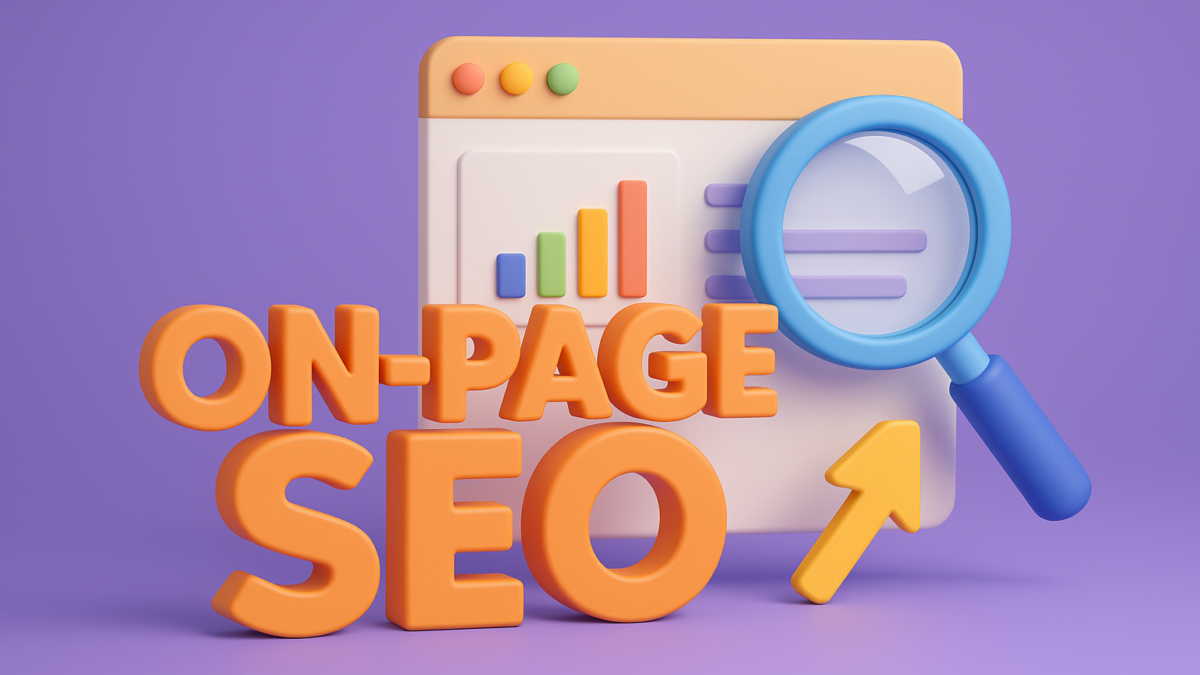What Is On-Page SEO? A Complete Guide to Boost Your Rankings
In today’s digital world, ranking higher on Google isn’t just about having great content it’s about optimizing every element on your webpage. That’s where on-page SEO comes in.
Whether you’re a marketer, business owner, or content creator, understanding on-page SEO is essential to increase visibility, drive traffic, and convert visitors into customers.
In this guide, we’ll break down what on-page SEO is, why it’s important, and how you can implement it effectively.
What Is On-Page SEO?
On-page SEO (also known as on-site SEO) refers to optimizing individual web pages to rank higher in search engines and earn relevant traffic.
It involves improving both content quality and HTML source code elements, such as:
- Title tags
- Meta descriptions
- Headers (H1, H2, H3)
- Internal linking
- Image optimization
- Keyword placement
Unlike off-page SEO, which focuses on backlinks and external signals, on-page SEO is entirely under your control.
Why Is On-Page SEO Important?
On-page SEO helps search engines understand your website’s content and determine its relevance to a user’s query.
Here’s why it’s crucial:
- Improves search rankings: Proper optimization makes your page more likely to appear in the top search results.
- Enhances user experience: Structured, readable content keeps visitors engaged.
- Increases conversion rates: Clear CTAs and relevant content guide visitors toward action.
- Boosts content visibility: Optimized pages are easier for both users and crawlers to navigate.
According to Ahrefs, over 70% of SEO experts agree that on-page optimization has a significant impact on ranking performance.
Key Elements of On-Page SEO
Let’s dive into the most important factors that determine your on-page SEO success.
1. Keyword Optimization
Every strong SEO strategy begins with keyword research.
- Identify primary and secondary keywords relevant to your audience.
- Place them naturally in the title, headings, meta tags, and throughout your content.
- Avoid keyword stuffing — Google prioritizes context and readability over repetition.
Example:
If your primary keyword is “on-page SEO”, variations like “on-site SEO techniques” or “optimize website pages” help build topical relevance.
2. Meta Tags: Titles and Descriptions
Your title tag and meta description are the first things users and search engines see.
Best practices:
- Keep your title under 60 characters.
- Write a compelling meta description under 160 characters.
- Include your target keyword early in both.
Example:
- Title: What Is On-Page SEO? A Complete Guide for Beginners
- Meta Description: Learn the key elements of on-page SEO to optimize your site and boost Google rankings.
3. Header Tags (H1–H6)
Headers structure your content, making it easy to scan and improving readability.
Use them strategically:
- H1: Primary page title (only once per page)
- H2s and H3s: Subheadings for sections and subsections
- Include keywords naturally in headings to reinforce topic relevance.
4. Content Quality
Content is still king — but it must be both valuable and optimized.
Follow these tips:
- Write original, in-depth content that answers user questions.
- Include statistics, case studies, or examples to build credibility.
- Use bullet points, short paragraphs, and visuals for readability.
Pro Tip: Add internal links to related articles or service pages on your site (e.g., “Learn more about Whitepaper Syndication”).
5. Image Optimization
Images enhance your content — but only if they’re optimized correctly.
- Use descriptive file names (e.g., on-page-seo-guide.jpg).
- Add alt text with keywords for accessibility and SEO.
- Compress images to improve page load speed.
Fast-loading visuals improve both SEO performance and user experience.
6. Internal and External Links
Links help establish authority and guide readers.
- Internal links: Connect related pages within your website to improve navigation and SEO signals.
Example: Check out our guide on B2B Lead Generation. - External links: Reference reputable sources (like Moz, HubSpot, or Google Search Central) to build trust and credibility.
7. Page Speed & Mobile Optimization
Google prioritizes mobile-friendly and fast-loading websites.
- Use tools like Google PageSpeed Insights to measure performance.
- Compress images, enable caching, and minimize code.
- Ensure your site design is responsive across all devices.
8. URL Structure
Clean URLs help both users and search engines understand your page.
Best practices:
- Keep URLs short, simple, and keyword-rich.
- Example:
www.example.com/on-page-seo-guide - Avoid using numbers or special characters.
Step-by-Step On-Page SEO Checklist
Here’s a quick checklist to ensure your page is fully optimized:
Perform keyword research
Write SEO-friendly titles and descriptions
Use H1, H2, and H3 headers
Optimize content with keywords and visuals
Add internal and external links
Compress images and test site speed
Ensure mobile responsiveness
Use schema markup (if relevant)
Real-World Example:
Let’s say you’re publishing a blog on “Programmatic Advertising in 2025.”
If you use relevant keywords, structured headings, optimized images, and internal links (like linking to your “Digital Marketing Services” page), your chances of ranking on Google increase significantly.
That’s the power of on-page SEO done right.
Conclusion: Optimize Today for Better Rankings
Mastering on-page SEO is the foundation of any successful digital marketing strategy. From crafting keyword-rich titles to optimizing images and internal links every element plays a part in helping your page rank higher and convert better.
If you’re ready to improve your SEO performance, start optimizing your website today.






